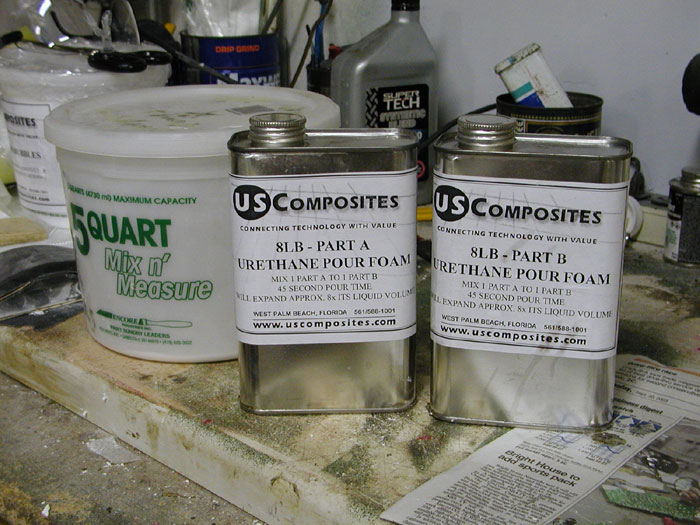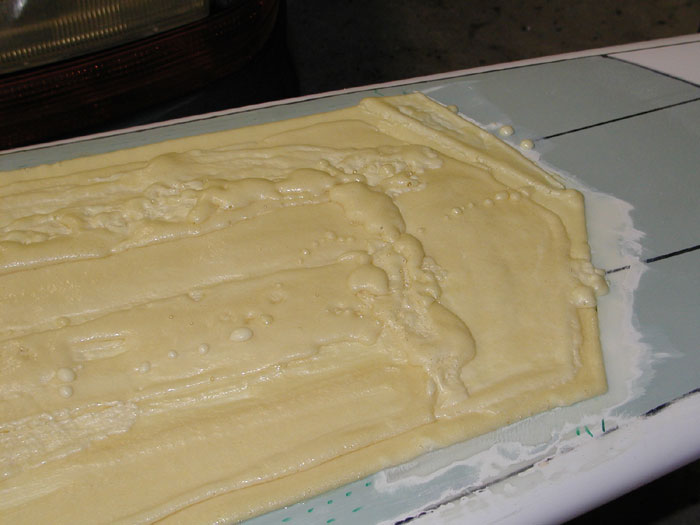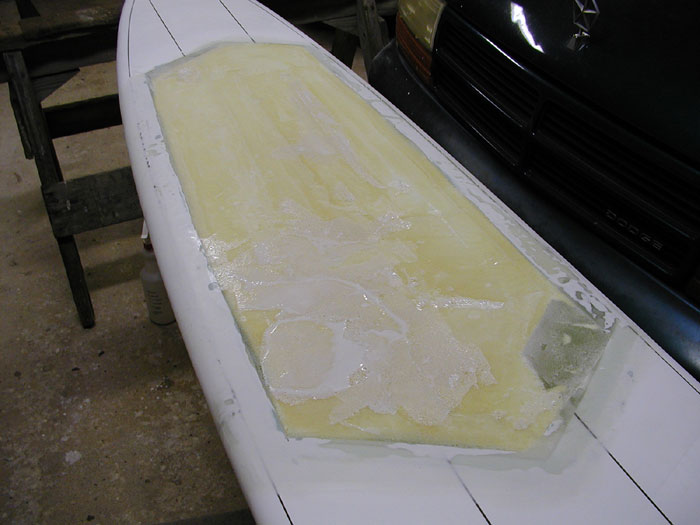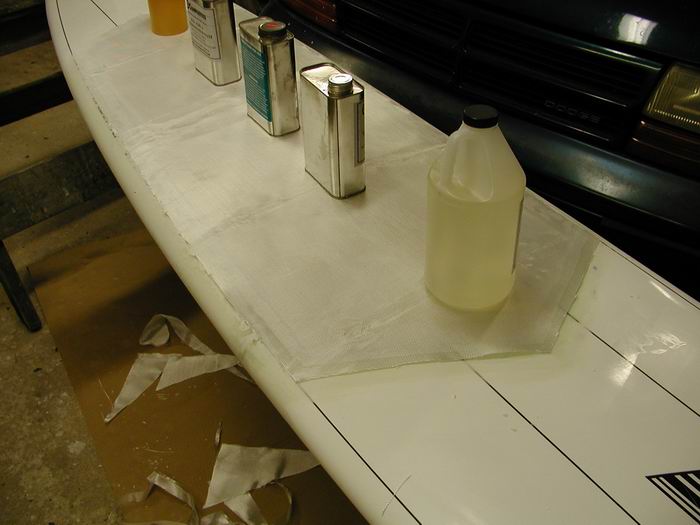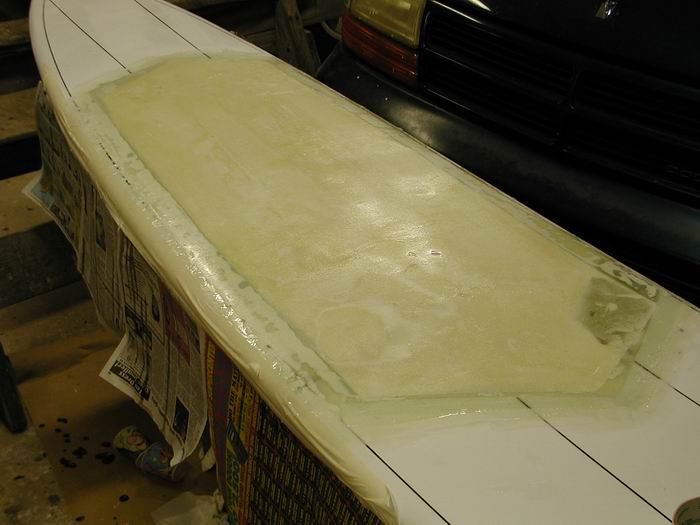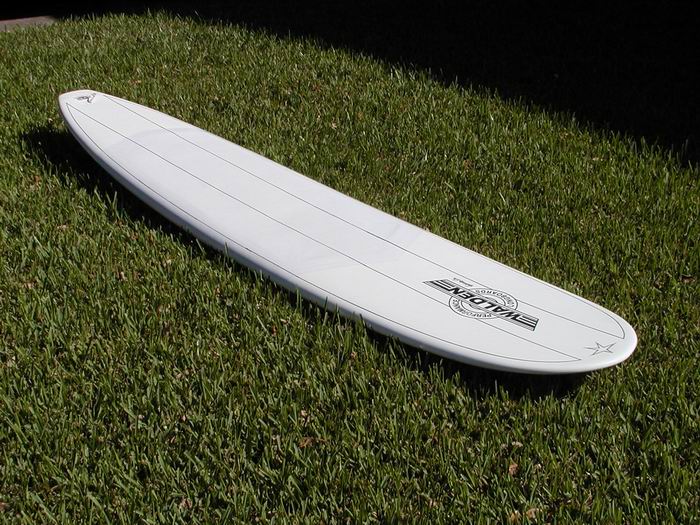|
CFLsurf Home Page
|| About this Site
|| Photo Galleries
|| Surf the Web ||
Return to Repair Series
Page
Part 2 of Ross's Famous Surfboard Repair Series
Experimental Lightweight Board Repair
| This is the story of a Boardworks epoxy board that had a 5 foot section of the deck completely delaminated and was subsequently broken in half. I didn't break this one, but I've broken 11 boards in the past 10 years, including 2 of these high-tech epoxy things. The goal of this task was not just to fix the board, but to do so without adding significant weight and rigidity, two things that can really ruin a board. |

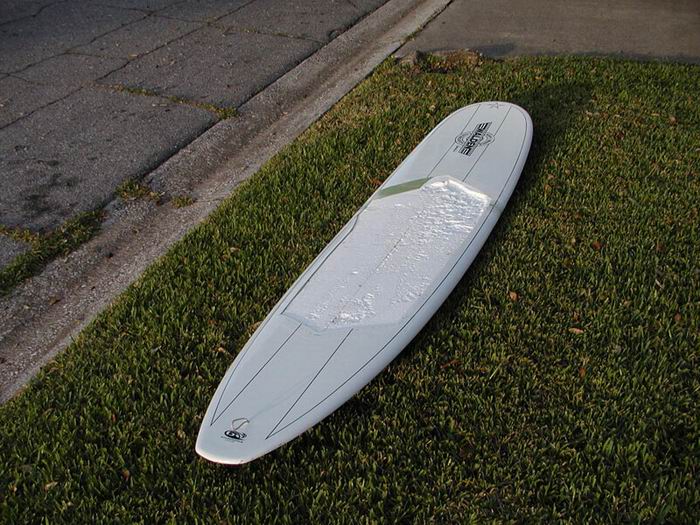
| This is a rather extreme case. Most breaks are not this massive. As you can see in the two pics above, I tacked the board back together with side patches for ease of handling. The bottom laminate was still good, but the foam was broken all the way through and badly crumbled around the break area. |
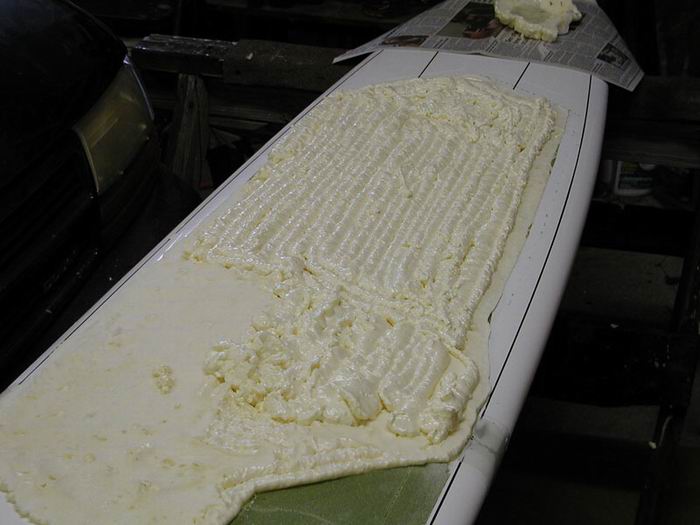
| On the first attempt, I used Right Stuff spray can foam as filler. This was a major mistake. Right Stuff is hard to work with, much too soft, and ends up with too many large air pockets. It does laminate well with epoxy however, and appeared to bond well in initial testing. It worked OK for about a week in chest high waves. |
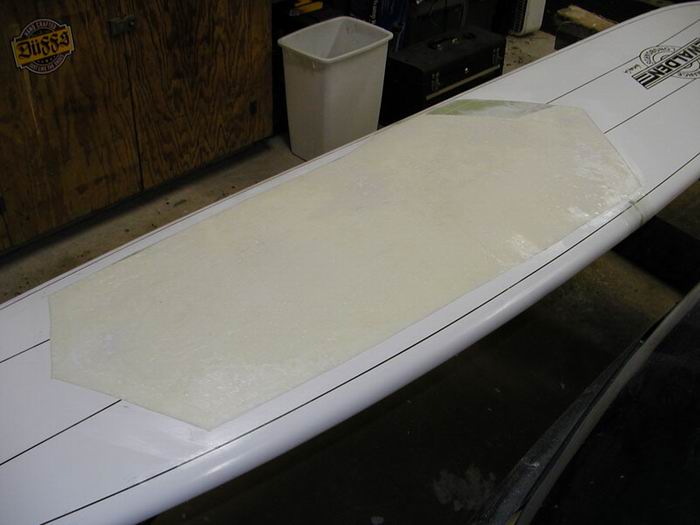
| Sanding it down was extremely difficult due to the soft foam, and the large air bubbles took quite a few coats of filler with a resin/microballoon mix which added extra weight I didn't want to add. |
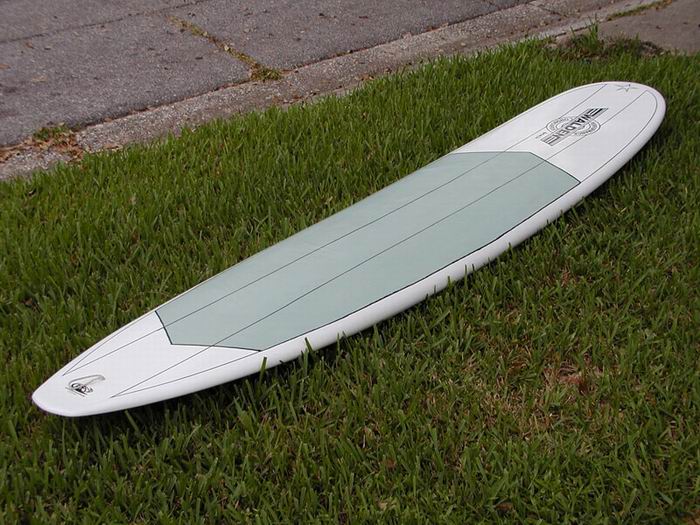
| The finished board weighed 15.5 pounds with fins, which is pretty light
for a wide 3" thick 9 footer. However, after a week of use, the Right Stuff foam separated from the polystyrene foam core, and the entire rear half of my patch bubbled up. |
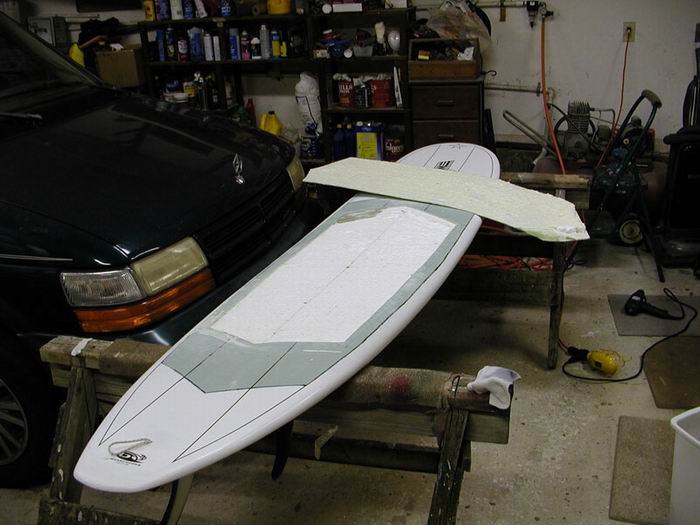
|
I cut the entire deck patch back off using a Dremel tool. We are now looking at a gap of 3/8 inch deep, 5 feet long, and 18 inches wide (once again). The damage to the foam is over an inch deep in a few spots towards the front deck where the board-break pulverized the foam. If I were to use a microballoon/resin mix for filler, the board would end up way too heavy. I didn't want another 20 lb board. The board, as you see it sitting on the saw horse with the deck removed weighed 13 lbs with fins attached. Before the deck was cut off, it weighed 15.5 lbs. A light board makes a BIG difference in the water. |
